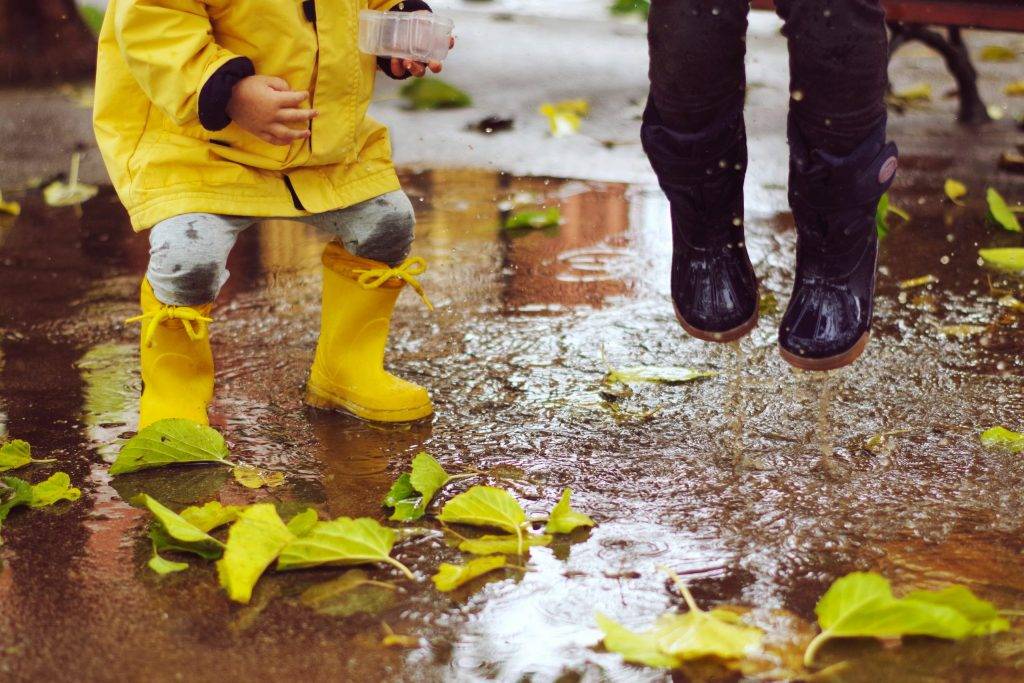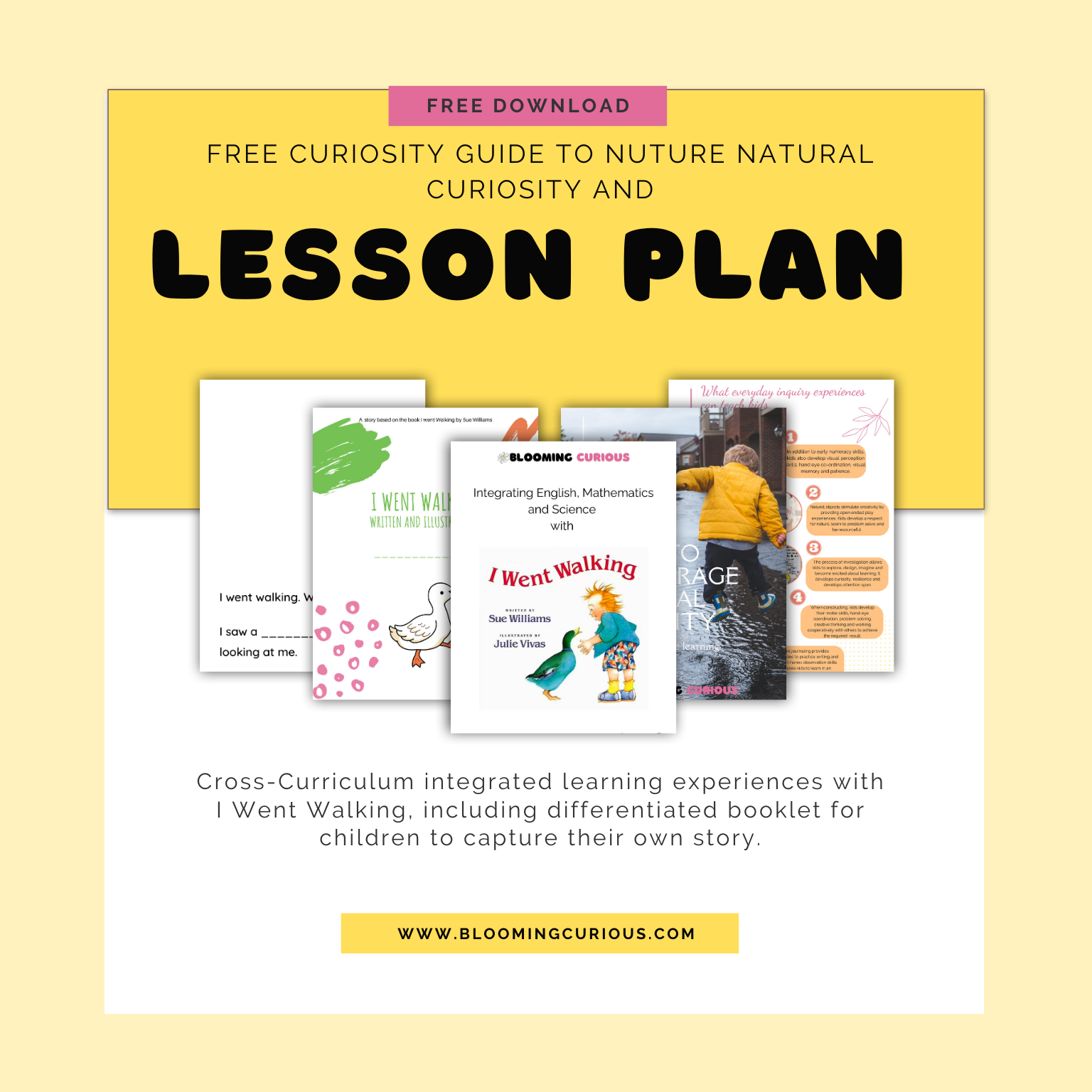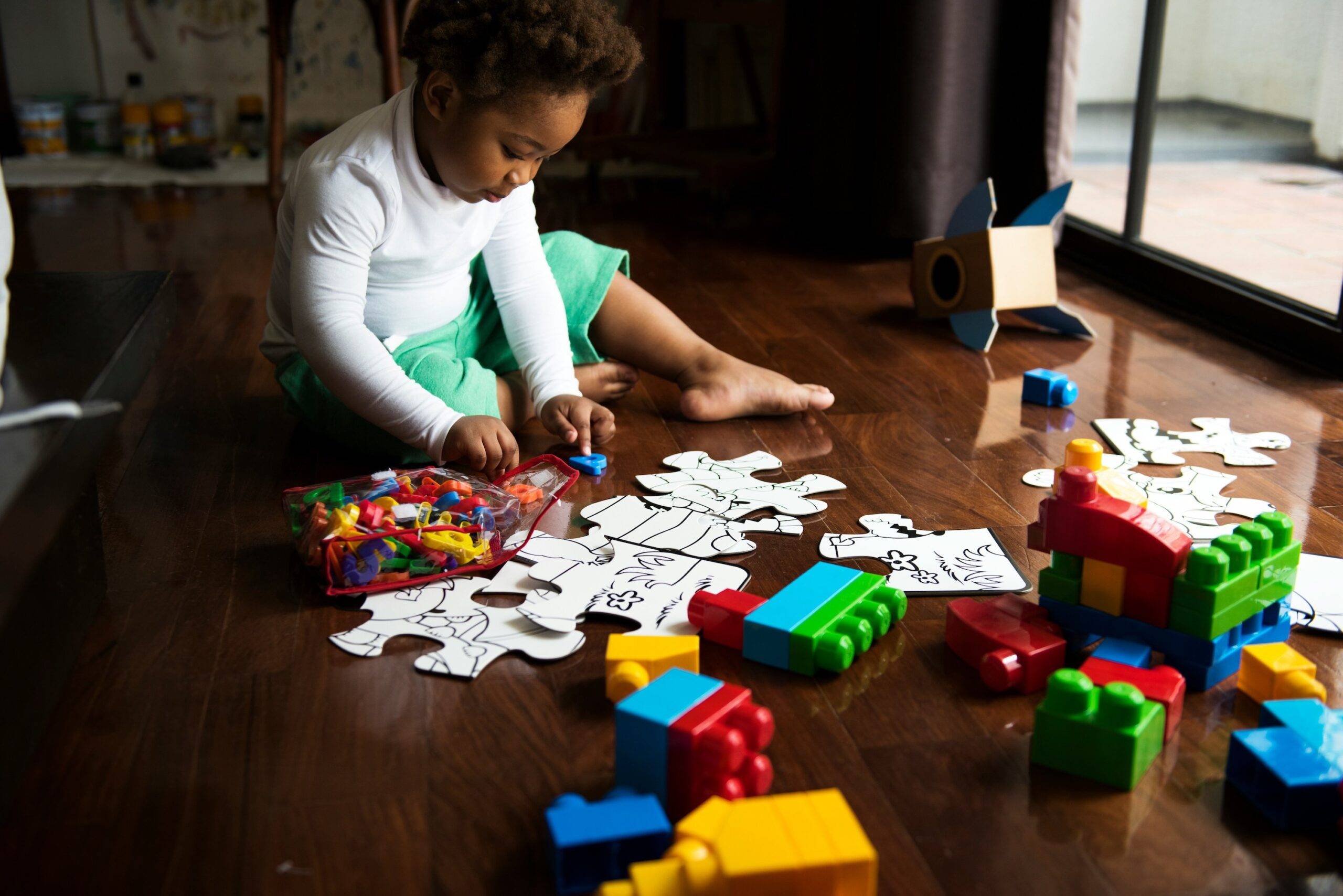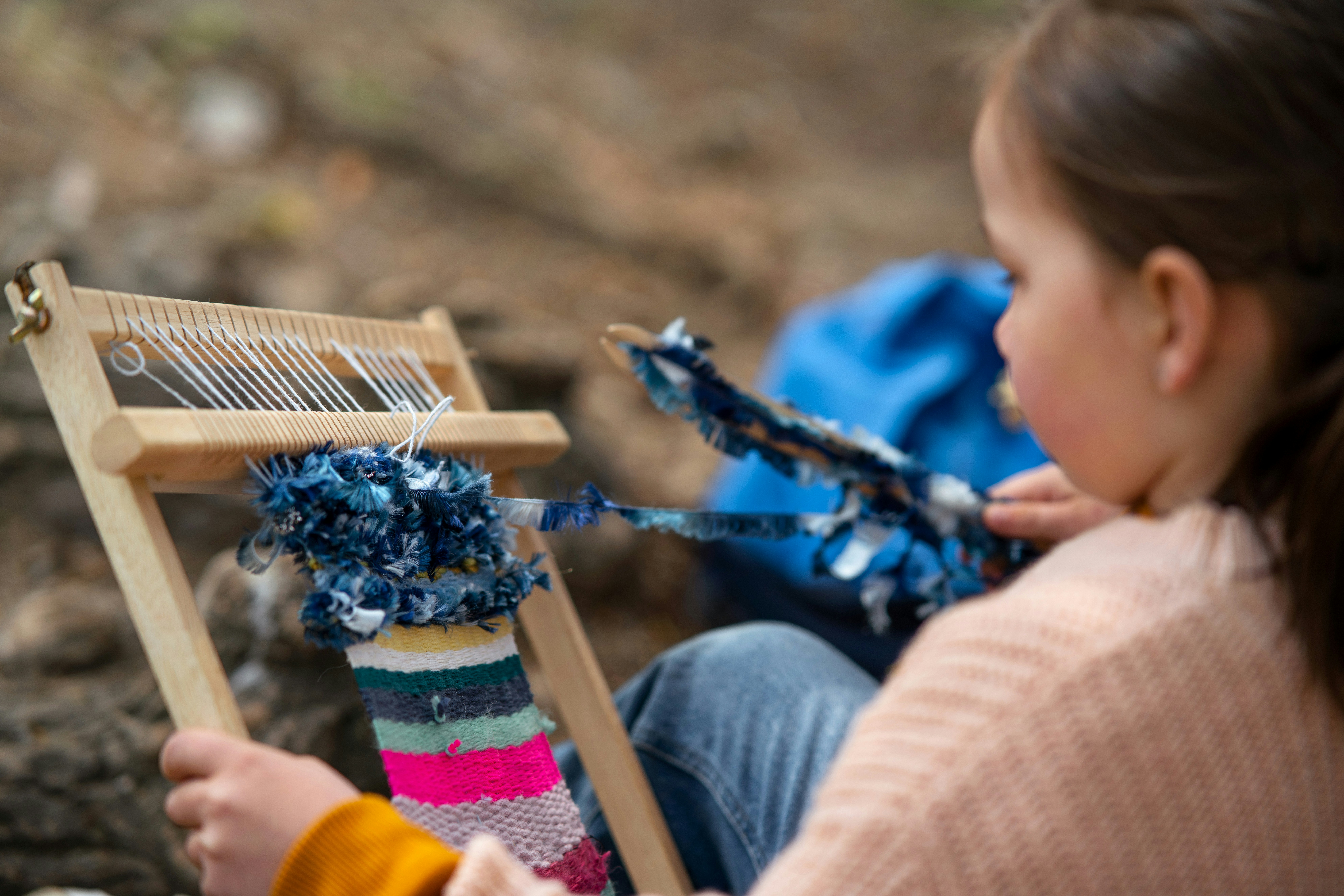Some of the links below may be affiliate links. This means that, at zero cost to you, I will earn an affiliate commission if you click through the link and finalise a purchase. All product recommendations are products that I have used and loved, or products that I would recommend based on experience.
How do we develop children’s curiosity? Is it even important for learning?
There is much research around the benefits of curiosity for learning, and its impact on social and emotional development in young children. Have you noticed that school aged children don’t really ask questions anymore?
Or when you ask them a question there’s the shoulder shrug followed by, “I dunno.”
Have you noticed that screens appear to be the thing that many kids now find most interesting?
And what about a general lack of enthusiasm for learning or an alertness to what’s going on in the world around them?
These things really concern me as an Early Childhood educator. What’s happening to our kids? Is it our teaching methods? Is it parenting? Or does the blame lie with technology? Or a bit of everything?
You see, very young children ( especially those that have not had a screen put in their hands) are naturally curious. They constantly ask “Why?” and they poke and explore just about everything. Put children outside playing in a park, a playground or back yard and inevitably they will come across a snail, a ladybird, a worm, a dandelion…anything really. Learning is a natural part of their existence, and everything around them is subject to inquiry. To them everything is new and fascinating. As it should be!
So, the moment that child holds out their hand to us with the snail or bug or worm perched perfectly in the centre, their eyes shining with excitement, at that moment, we have an opportunity to foster their curiosity and a lifelong love of learning, or snuff it out.
As educators and parents, we have the power to open a world of awe and wonder and fascination for children and foster their natural tendency to explore and be fascinated by the world around them.
Our words, our facial expression and our attitude are the catalyst for instilling a love of learning and curiosity, or not.
How Attitude Influences Curiosity
The first step towards creating an environment rich with curiosity is you and me. We are the facilitators of learning. Our enthusiasm for learning and exploration is the fuel that lights the fire in children. Our responses and our questions have the power to keep children’s curiosity healthy and flourishing.
Our feelings about spiders, slimy snails, or muddy worms are not important. It’s not about us, or about our feelings, it’s about them. When a child shows interest in something, and we help them find out more ( which is the foundation of inquiry), it’s not just the children who learn, but it’s also the perfect opportunity for us to learn alongside our children.
How to Provoke Curiosity?
We are all born innately curious. It is curiosity that helps us become more observant about the world around us and helps us figure out how the world works. One of the best things we can do as parents and educators is to provide opportunities that will allow children to explore and be curious, and nothing fascinates children more than the natural world! Just about any outdoor pursuit is the perfect opportunity to encourage curiosity and wonder. Visiting a zoo, a park, a trail, going biking, bush walking, fishing, camping or hanging out in your backyard, all provide wonderful opportunities for curiosity and wonder.
It’s not just being in nature that matters. The research is clear. Unstructured play is equally important for nurturing a child’s sense of discovery.
Allowing a child just to play with no purpose is invaluable for healthy social, emotional, and cognitive development. In Saving Our Children from Our Chaotic World, Maggie Dent cites research by Parry and Gregory that shows that unstructured play in the natural environment, is not only important for growth and development, but is vital for the integration of neural pathways for all multiple intelligences.
Being fully immersed in play is highly significant for children, it provides them that deep sense of joy and wellbeing that is profoundly necessary for healthy social and emotional well-being.
Creating opportunities to be in nature, allowing children to play unencumbered and freely and then choosing the right moment to ask the right type of questions are all part of the bigger picture… the nurturing of happy, curious, wondering children.
How Inquiry and Questions Help Develop Curiosity
Inquiry invites a learner to take an active role in their learning. There’s no sitting still for lengthly periods of time. Inquiry is doing. It’s project based learning, where kids are learning to ask questions and we’re helping them search for answers to build their understanding.
Inquiry doesn’t just take place in a classroom; inquiry can happen anywhere and at any time. Just like curiosity.
When kids are encouraged to get involved in hands-on learning, when they’re experimenting, or building, or creating mud pies and potions, it puts a whole new spin on their learning day. Learning becomes fun!
Inquiry and project-based learning, creates opportunities for children to get involved in many different ways as they explore a topic. In the early years especially, being active, and doing hands-on tasks will have far more appeal than a screen… for a while at least.
It is during these early years that kids have questions, and are enthusiastic about learning, and it’s also the perfect opportunity for us as parents and educators to take advantage of that natural curiosity and use it to light the fire for a lifelong love for learning and curiosity.
We as educators (remember parents are educators) are no longer talking at children, but are rather learning alongside them as facilitators. It requires a mind shift on our part.
I love this clip which beautifully explains inquiry-based learning and why it is so important for our children’s development.
How to use inquiry to foster curiosity and increase engagement in preparation for learning
You might be asking why curiosity is so important if you just want your child to be ready for schooling? Well, if a child does not love learning, how are we possibly going to get them to learn to read and write?
Aside from our own attitude and enthusiasm, asking questions will be the most important skill for developing a child’s innate curiosity. Asking the right type of question is quite tricky. Our questions should encourage exploration and curiosity and be a natural part of our everyday experiences.
In the busyness of life we are often tempted to simply give explanations and answers and move on. Or as one of my students replied when I asked where we could find answers to our questions, “Just ask Siri!”
Mmmm I don’t think that’s what we’re aiming for.
To really inspire our children to be lifelong learners, we need to cultivate curiosity and a habit of questioning and then encourage exploration to find the answers to those questions.
If you’re still wondering why I bang on about the importance of our children being curious, then consider this; if our kids don’t love learning and are not excited about learning, how do we expect them to sustain any interest in learning to read and write? Before we can even contemplate teaching kids to read and write, we need to cultivate in them that burning desire to want to read, and to find out more about whatever it is they are wondering about.
I have created an e-guide (click on the Download Your Free Guide image) to give you a taste of just how easy it is to help young kids develop essential skills, curiosity and a love for learning while engaged in everyday experiences.
Your free e-guide includes:
* Ten top tips for providing opportunities for curiosity and wonder in everyday learning
* How to integrate inquiry thinking and curiosity into everyday experiences.
* What these inquiry experiences can teach kids
* Sample teaching schedules for children aged up to 5 years old
* A list of questions to encourage curiosity
* Information on why we should be encouraging our children to be curious
* An observational journal
What about those incidental moments that are such powerful opportunities for learning? Check out this blog post to find tips for encouraging keen observation skills in children. It’s observation after all that sparks curiosity!
And when you do want to take those incidental moments further and use them as a catalyst for inquiry learning, check out this blog post for On the Go Inquiry, which provides you with tips and resources to help you do just that!
Here, at Blooming Curious I promise to guide and support you as you learn how to best support your students in their learning. I will show you how to foster curiosity in your everyday experiences, whether that’s inside your classroom, home or outside in nature.
The best way to get all the inspiration and practical strategies you need is to
- Subscribe below to the weekly newsletter.
- Tune in and follow the podcast
To listen 🎧 to the accompanying podcast episode go to https://bloomingcurious.com/podcast-episode/ep-2-how-to-keep-kids-curious/









